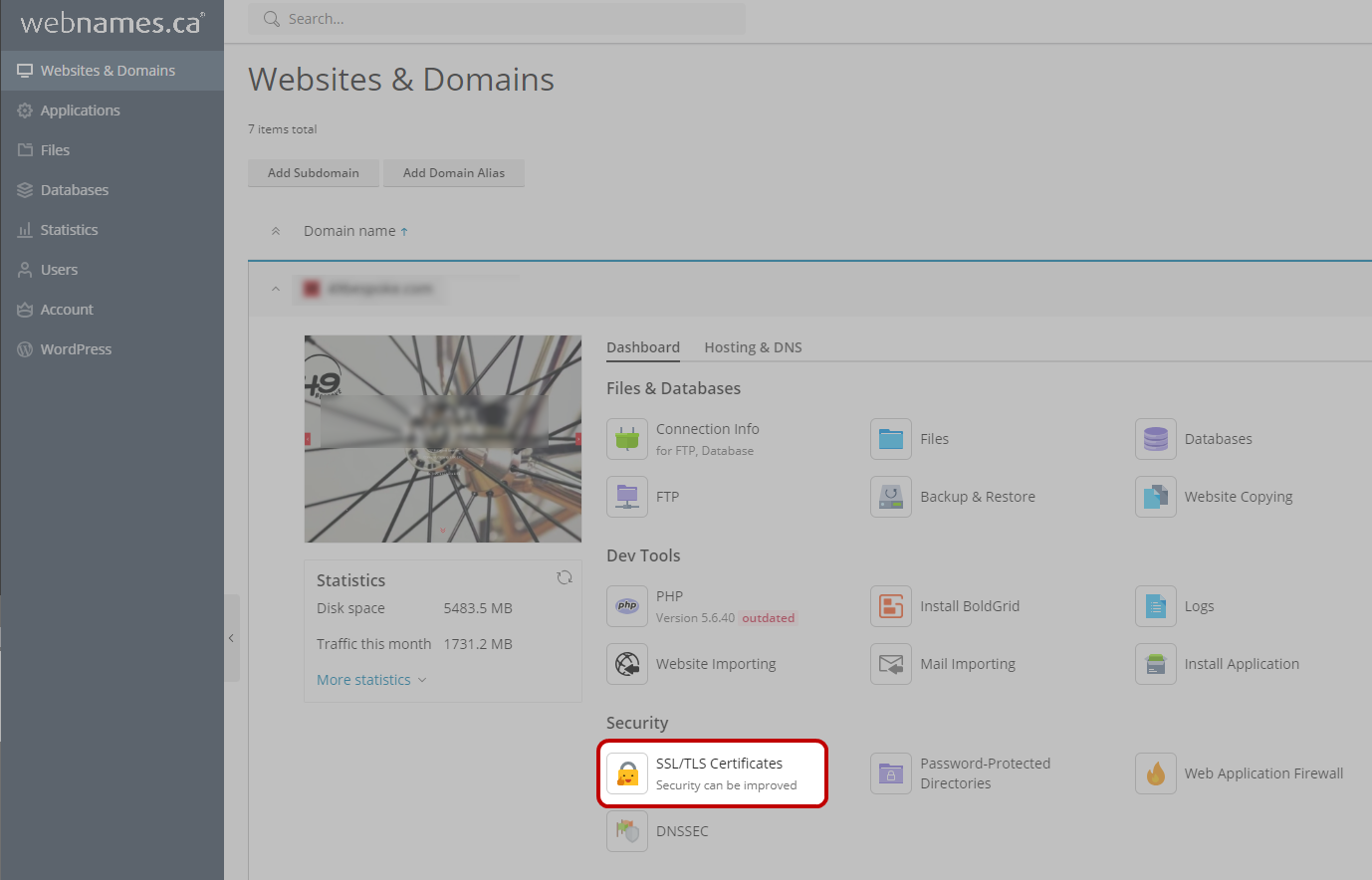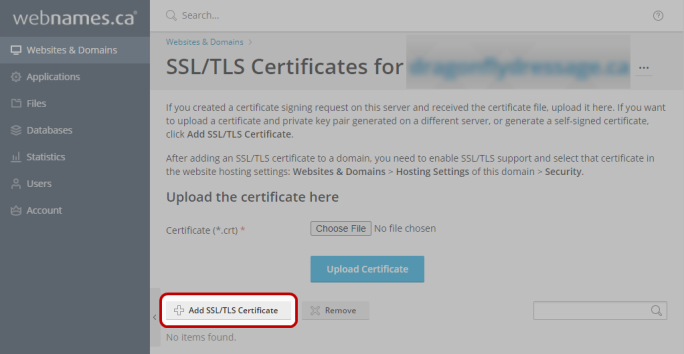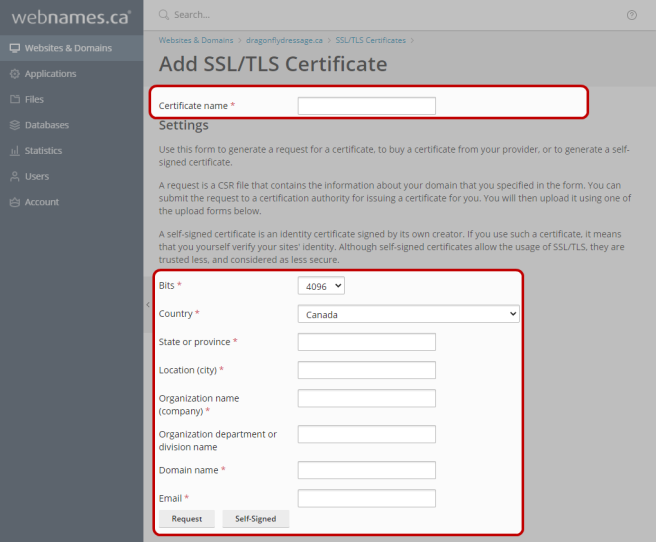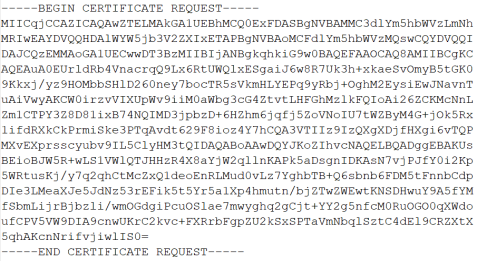Generating Certificate Signing Requests
To generate a certificate signing request:
A special note for our Webnames Web Hosting customers: In addition to the manual SSL Certificate![]() SSL Certificates are created for a particular server and domain, and are issued by trusted, third-party Certificate Authority (CA) - comparable to your passport. As the Certification Authority, the SSL Certificate vendor authenticates the identity of the purchaser and verifies the business that owns the domain. installation steps outlined below, all Webnames web hosting customers can take advantage of AutoInstall SSL
SSL Certificates are created for a particular server and domain, and are issued by trusted, third-party Certificate Authority (CA) - comparable to your passport. As the Certification Authority, the SSL Certificate vendor authenticates the identity of the purchaser and verifies the business that owns the domain. installation steps outlined below, all Webnames web hosting customers can take advantage of AutoInstall SSL![]() Transport Layer Security (TLS) and its predecessor, Secure Sockets Layer (SSL), are cryptographic protocols that provide communication security over the Internet.[1] TLS and SSL encrypt the segments of network connections at the Application Layer for the Transport Layer, using asymmetric cryptography for key exchange, symmetric encryption for confidentiality, and message authentication codes for message integrity. within our Web Hosting packages. AutoInstall SSL allows for the configuration, validation, issuance and installation of SSL certificates in a few easy steps.
Transport Layer Security (TLS) and its predecessor, Secure Sockets Layer (SSL), are cryptographic protocols that provide communication security over the Internet.[1] TLS and SSL encrypt the segments of network connections at the Application Layer for the Transport Layer, using asymmetric cryptography for key exchange, symmetric encryption for confidentiality, and message authentication codes for message integrity. within our Web Hosting packages. AutoInstall SSL allows for the configuration, validation, issuance and installation of SSL certificates in a few easy steps.
To generate a CSR key manually from within the wEBNAMES Hosting Control Panel
- Log into your Webnames account at https://webnames.ca
- Browse to My Account > Manage > Web Hosting
- Click on your domain name
- Click on the Hosting Tab
- Under the Hosting Logins heading, click on Login for the Hosting Control Panel
- Once logged in, go to theWebsites & Domains and click onSSL/TLS
 The Transport Layer Security protocol aims primarily to provide privacy and data integrity between two communicating computer applications.[1]:3 When secured by TLS, connections between a client (e.g., a web browser or email program) and a server (website or email server) are private (or secure), authenticated, and unaltered. Certificates.
The Transport Layer Security protocol aims primarily to provide privacy and data integrity between two communicating computer applications.[1]:3 When secured by TLS, connections between a client (e.g., a web browser or email program) and a server (website or email server) are private (or secure), authenticated, and unaltered. Certificates.

- Click the Manage button.
- Click the Add SSL/TLS Certificate button.

- Specify the following certificate parameters:
- Certificate name: This is a label of your own choosing and will help you identify this certificate should you have more than one in the future.
- Bits: This value controls the strength of the encryption algorithm used to create your CSR Key. Bigger is better.
- Your location and organization name: These are required fields and should not exceed the length of 64 characters.
- The corresponding domain name for this SSL certificate. IT is critical that spelling etc be 100% accurate in this field. Example: yourdomain.com
- The website administrator's (or your) e-mail address.
|
NOTE: Your choice of domain name is critical, and cannot be changed later. Generally speaking, www should not be included in the domain name you specify, since this variation of domain name will automatically be included as an alternative name (SAN Example: A certificate configured for yourdomain.com will also automatically work for www.yourdomain.com, however the opposite is not true - A certificate for www.yourdomain.com will not work for yourdomain.com |
- Make sure that all the provided information is correct and accurate. This information should match the WHOIS
 WHOIS (pronounced as the phrase who is) is a query and response protocol that is widely used for querying databases that store the registered users of domain names, information for the corresponding domain name.
WHOIS (pronounced as the phrase who is) is a query and response protocol that is widely used for querying databases that store the registered users of domain names, information for the corresponding domain name. - Click Request. The hosting server will generate your private key and certificate signing request and add them to your certificates repository (Websites & Domains > SSL Certificates).

- In the list of certificates, click the name of the certificate you need.
- Locate the CSR section on the page, and copy the text that starts with the line and ends with the line to your clipboard.

- This CSR text will be required in the next step. Keep the window containing your CSR open, and proceed to the next step.